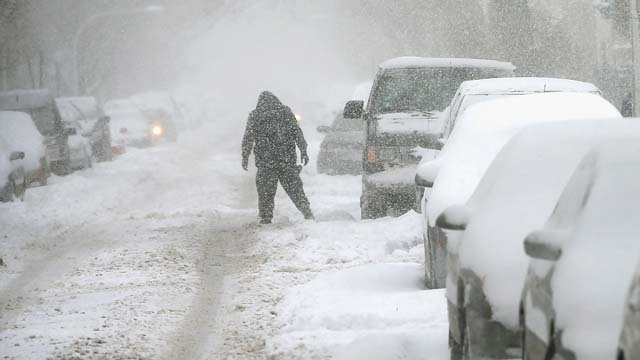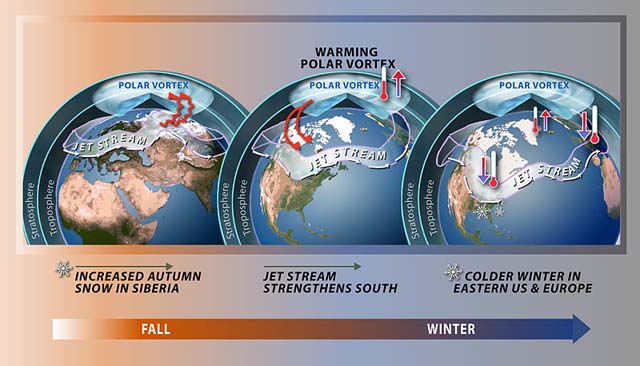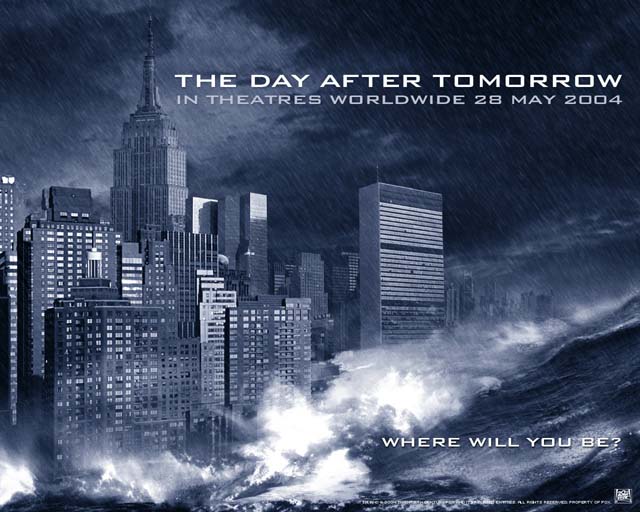
(Getty)
A Polar Vortex — or Arctic or Antarctic Cyclone — is a hurricane-type weather system that normally remains above the Earth’s poles but occasionally strays from its perch and causes wild fluctuations in populated parts of the world.
That’s what’s happening this week in America, where, according to CNN, around half of the United States will experience temperatures that are below zero. FlightAware reports that 3,000 flights have been canceled across the country due to the weather.
It vortex brings frigid, dense air that drives down temperatures and creates dangerous wind chills.
Here’s what you need to know about this cataclysmic weather system:
1. The Vortex Will Help Break Temperature-Low Records
Coldest wind chill report goes to -63 at Comertown, MT…see storm summary for more #coldoutbreak #coldweather http://t.co/MmTI1tbZfp
— NWS WPC (@NWSWPC) January 6, 2014
It’s the coldest it’s been in 20 years across some parts of the U.S.
In New York, temperatures are expected to drop to around minus 7 degrees on January 7, marking a shocking 60 degree single-day drop. CNN’s meteorologist, Dave Hennen, has said that there will be an amazing 130 degree temperature spread across the country on Tuesday. For example, Minnesota is bracing itself for -60 degree weather whereas Key West, Florida can expected plus 70.
2. Vortexes Rarely Travel Away From the Planet’s Poles

(Wikipedia)
What makes this system different from other typical cold snaps is that Polar Vortexes usually stay in either the North or South Pole. This vortex comes from the Arctic; it’s elongated with the two centers, one over Baffin Island in Canada and the other over Siberia in Russia. What pushes the vortex away from the poles is “axis interruption,” which last happened in the winter of 1985.
3. A Polar Vortex Was the Basis of the Plot of ‘The Day After Tomorrow’

In the 2004 disaster movie, The Day After Tomorrow, the world is pushed to a new ice age thanks to an extreme case of a Polar Vortex straying from the poles. Though the science in the movie came under criticism from paleoclimatoligist, Daniel Schrag who said:
On the one hand, I’m glad that there’s a big-budget movie about something as critical as climate change. On the other, I’m concerned that people will see these over-the-top effects and think the whole thing is a joke…
We are indeed experimenting with the Earth in a way that hasn’t been done for millions of years. But you’re not going to see another ice age – at least not like that.
4. The City of Indianapolis Has Banned Driving During the Vortex
According to The New York Times, cities and states across the Midwest are taking extreme measures to combat the vortex. The mayor of Indianapolis has banned driving until further notice. In Chicago, public schools have been shut down, the same goes for Minnesota.
5. A Polar Vortex Was Partly Responsible for Hurricane Sandy Impacting the US
The volatility of the Polar Vortex may be related to climate change. Researchers have suggested that Arctic sea ice decline is to blame, though because the research has been going on for less than 10 years, the conclusions are regarded as uncertain. A high-pressure event over Greenland in 2012 helped steer Hurricane Sandy toward the Northeast of the United States. Researchers at Cornell asserted:
A strong atmospheric, high-pressure blocking pattern over Greenland and the northwest Atlantic prevented Hurricane Sandy from steering northeast and out to sea like most October hurricanes and tropical storms from the Caribbean. In fact, Sandy traveled up the Atlantic coast and turned left “toward the most populated area along the eastern seaboard” and converged with an extratropical cyclone; this, in turn, fed the weakening Hurricane Sandy and transformed it into a monster tempest.